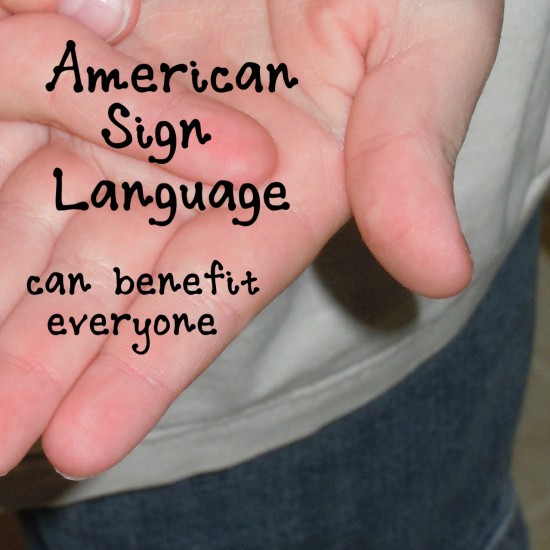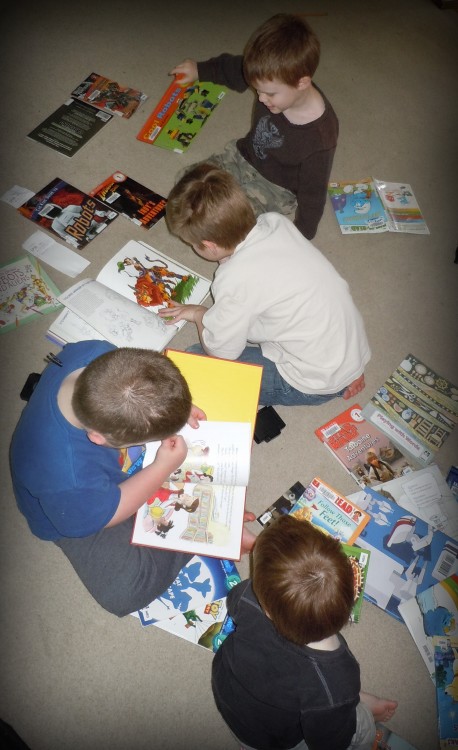advertisement
The follow is a post from contributing writer Megan Spires from House of the Rising Sons.
In this third and final part of our American Sign Language (ASL) series, we’ll discover even more engaging ways to learn ASL and teach it to your children. Be sure to read Part 1: how to get started teaching your kids ASL and Part 2: 5 fun ASL learning activities here at The Homeschool Classroom, if you haven’t already.
ASL is used by millions of deaf and hard of hearing Americans and their family members, educators and interpreters. Also, this language benefits babies and young children who aren’t quite able to communicate their needs verbally yet. And ASL is often the primary language of many children and adults who have any number of communication challenges or disabilities.
advertisement
This truly is a language that has many benefits for all people of all abilities, including those who can hear. Imagine meeting someone at the park, at church or your homeschool co-op that signs, for whatever reason. If you and your child also signed, there could be an instant connection. Whenever we meet someone for the first time who also signs, all four of my boys become excited and feel a sense of “knowing” with that other person, a bond like no other, even if just for that moment.
You may be wondering….how can I really teach this language and how do I really begin adding it into our days? In Parts One and Two of this series, we began with learning the ASL alphabet, which is crucial to the foundation of ASL. Then we moved on to ASL games, crafts and activities to easily add into the daily rhythms of your days.
Now we can go a little deeper continuing the process and journey of learning and teaching ASL in a variety of ways that will work with your current teaching methods and styles.
Here are 7 simple ways to pull ASL into the rhythm of your day:
Study ASL History
A great place to begin is by studying the origins of ASL. There are so many online resources for this. You and your elementary aged+ students will find the history fascinating and will begin to see how, over time, this language has evolved into a language used by many.
Biographies
We love biographies because they allow us to walk in the paths of people who can reveal bits of history from their perspective and life circumstances. Some biographies worth including in your studies of ASL are of Hellen Keller, Thomas Edison, Ludwig Van Beethoven, Linda Bove (of Sesame Street), Laurent Clerc (co-founder of the first American deaf school) and Curtis Pride (Major League Baseball player).
Your Daily Routines
With pen and paper, write down all of the things you do in a given day or week that are routine for your kids. Our long list of to-do items includes school work, chores, errands, play-dates, field trips, co-op days, extra curricular classes, sports, etc. I’m sure yours does too.
After you have your list, you’ll begin to see routine pockets of time that you can easily incorporate ASL into. Choose one or two areas to start with. These will become your daily ASL lessons.
Here are a few of our chosen daily ASL incorporated routines:
- Calendar and morning board time: We focus on learning the signs for numbers, days of the week, months of the year, weather, colors and bible verses.
- Arts/Crafts/Table Work: While we are sitting around our table, we focus on learning and using specific signs that relate to “school work”, such as “paper”, “pencils”, “scissors” and “read”.
- Reading books: As mentioned in Part Two of this series, reading books is one of our favorite times to learn and practice ASL. Animating the stories with expressive signs will take your read aloud times to a whole new level of engagement. One thing I highly recommend is a book holder so you and your kids can use your hands more freely to sign. I also suggest choosing several picture books and living books at a time that will support themes that you and your child will enjoy together.
“Voices Off”
We learned this little trick early on and it stuck. Often, I’ll suddenly shout “Voices Off” to initiate a “signing only” moment. This is a great way to really use those signs you’ve already learned and begin signing more conversationally.
Meals
This is a great time to take advantage of the routine of eating meals together. We focus our signing around food and manners during these times.
Child Interests and Unit Studies
Does he love to draw or build with Legos? Is she passionate about photography or the outdoors? Our family really enjoys unit studies. We find focusing our time on one theme at a time to be of great value when it comes to learning, including ASL. Whenever you’re in planning mode, just keep your eyes open for ways to include ASL.
More Great Online Resources for learning ASL:
Teaching ASL, as a natural extension of everything you are already doing, is very doable. All it takes is some great tools and resources, fun games and activities, recognition of opportunities for ASL inclusion and of course a desire to learn and be consistent. Take a moment to imagine the benefits, possibilities and opportunities you and your child will experience if you choose to learn ASL as a second language.
Megan writes about her amazing journey raising and homeschooling four active boys while sharing her faith at House of the Rising Sons.
Join 40,000+ Other Awesome People
Subscribe to the Real Life at Home weekly newsletter to get our latest content, exclusive free printables, learning activities, and ideas for celebrating with your kids all year



Thanks for these great practical ideas. I had gotten off track with our sign language now that the boys are talking (we did lots when they were really little). I started using some signs again and was so pleased that they remembered. I love the reminder to keep it in our daily rhythm.
Thanks Meaghan! It is really easy to forget to include ASL in the daily routine, especially if the main reason for starting to learn it was to help you little ones to be able to communicate more effectively because they weren’t yet speaking. That’s why we started, mostly. At first looked at ASL as a tool…a means to an end, because our hope was that eventually our hard of hearing son would be able to communicate orally. A few years in and we realized that ASL was so much more than that. We finally understood that not only was it a great way to teach kids early on how to be understood, but it’s an amazing second language. I think it’s awesome that you’re using it with your boys again and that they remember it. You’re ahead of the game if you want to continue and teach ASL to them as their second language.
Hey this is amazing iam happy more people are being so proactive when learning sign language. JESUS BLESS YOU
I just came across this 7 ways to add asl 3rd part. I was wondering if I could get the first 2 also. I love asl and want to learn so badly. Please and Thank you.
Annette Miles
Annette – There are links to both of them in this post, but you can also find them here:
https://www.reallifeathome.com/tag/sign-language/